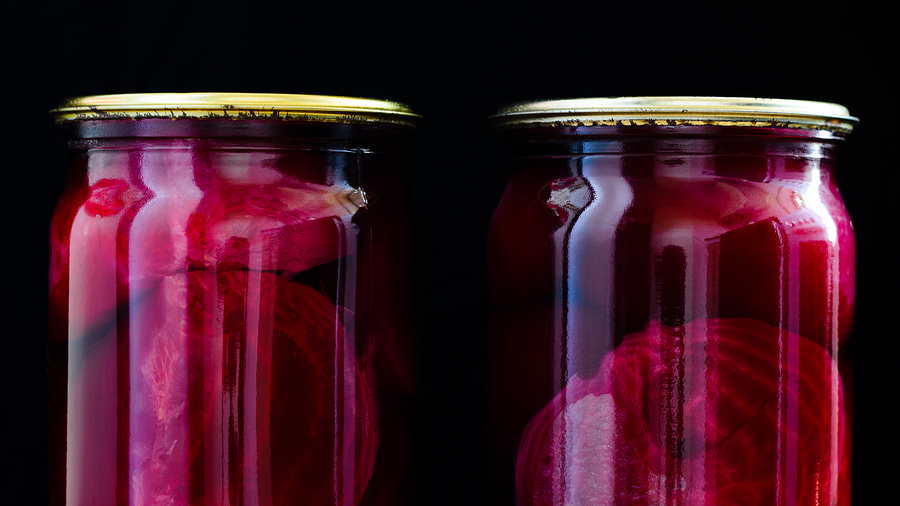Vegetable nitrates, concentrated in green leafy vegetables and beets, underwent a great makeover a few years ago. They went from being understood as inert substances to having a profound effect on the power plants within our cells, reducing the oxygen cost during exercise. This means they can allow us to bust out the same amount of work with less oxygen. One little shot of beet juice allowed free divers to hold their breath for more than four minutes, or about a half-minute longer than usual. For others, improved muscle efficiency allowed athletes to exercise at a higher power output or running speed for the same amount of breath. I profiled this fascinating discovery in an unprecedented 17-part video series (see below), the longest I think I’ve ever done. That was back in 2012, but what does the new science say? That’s what I cover in my video, Whole Beets vs. Juice for Improving Athletic Performance:
Most of the studies were done on men, but it works on women, too, including African-American women who are an even more neglected research demographic. Drinking beet juice results in the same workload power outputs using significantly less oxygen. But what about whole beets? They are cheaper, healthier, and found in any produce aisle, but there had never been studies on actual beets… until now.
RELATED STORY:
Whole beetroot consumption acutely improves running performance. They gave physically fit men and women a cup and a half of baked beets, which is equal to about a can of beets, 75 minutes before running a 5K. They started out the same, but during the last mile of the 5K race, the beet group pulled ahead compared to the placebo group, who were given berries instead. Though the beet group participants were running faster, their heart rate wasn’t any higher. If anything, they reported less exertion.
Faster time with less effort? They don’t call them block-rocking beets for nothing! 🙂
If nitrates are so good, then why not just take them in a pill? Although dietary nitrate supplements can work, their long-term safety is questionable. Non-vegetable sources of nitrates may have detrimental health effects, so if we want to improve our performance, we should ideally obtain nitrates from whole vegetables. The industry knows this, so instead it markets an array of nitric oxide-stimulating supplements. However, there is little or no evidence of a performance improvement following supplementation with these so-called NO boosters. The evidence is with the vegetables.
RELATED STORY:
How much money can companies make selling beets, though? How about a novel beetroot-enriched bread product? We’ve tried to get people to eat their fruits and vegetables, and where has that gotten us? But, hey! Lots of people eat white bread, so why not have them eat red bread? And indeed it worked: red beet bread brought down blood pressures and improved the ability of arteries to relax and dilate naturally. Bread, therefore, may be an effective vehicle to increase vegetable consumption without significant dietary changes,” because heavens forbid people should have to change their diet to improve their health…
If you want to put the whole discovery in context and get the detailed mechanism, see my 17-part video series:
- Doping with Beet Juice
- Priming the Proton Pump
- Don’t Use Antiseptic Mouthwash
- Out of the Lab Onto the Track
- Asparagus Pee
- Pretty in Pee-nk
- Vegetables Rate by Nitrate
- Is Bacon Good or Is Spinach Bad?
- When Nitrites Go Bad
- Hearts Shouldn’t Skip a Beet
- Bacon and Botulism
- Are Nitrates Pollutants or Nutrients?
- Prevention Is Better Than Cured Meat
- Carcinogens in the Smell of Frying Bacon
- Vitamin C-Enriched Bacon
- So Should We Drink Beet Juice or Not?
- Meat Additives to Diminish Toxicity
It’s great that we can improve athletic performance eating a few beets, but what about people who could really benefit from a more efficient use of oxygen? That’s the subject of my video Oxygenating Blood with Nitrate-Rich Vegetables. Also check out Slowing Our Metabolism with Nitrate-Rich Vegetables.
In health,
Michael Greger, M.D.
*Article originally appeared at Nutrition Facts.












